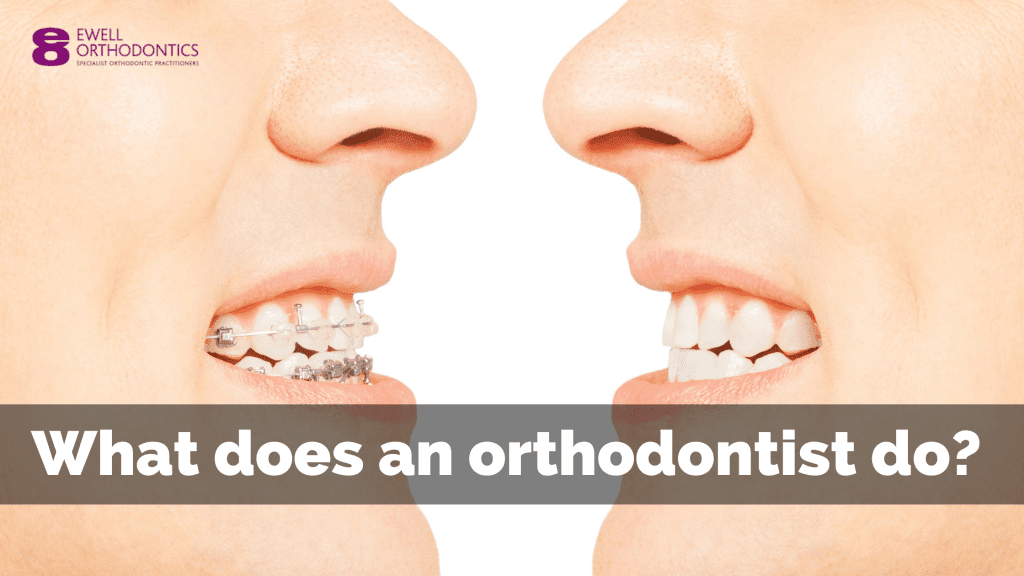The Best Strategy To Use For Legacy Orthodontics
Table of Contents6 Simple Techniques For Legacy OrthodonticsLittle Known Facts About Legacy Orthodontics.The Definitive Guide for Legacy OrthodonticsThe smart Trick of Legacy Orthodontics That Nobody is DiscussingThe Legacy Orthodontics PDFs
In addition, we supply adjustable treatment schedules, flexible settlement alternatives and a fun, pleasurable experience.An orthodontist is a dentist educated to diagnose, prevent, and deal with teeth and jaw irregularities. Orthodontists function with people of all ages, from youngsters to grownups.
Malocclusion, or misaligned teeth, can bring about oral issues, consisting of dental cavity, gum tissue illness, and tough or uncomfortable chewing. Not everybody is birthed with straight teeth. If you have a negative bite or big rooms between your teeth, you might wish to speak with a dental practitioner concentrating on orthodontic care.
Legacy Orthodontics Things To Know Before You Get This
( Photo Credit Score: DigitalVision/Getty Images) Orthodontists make use of repaired and removable oral gadgets, like braces, retainers, and bands, to transform the placement of teeth in your mouth. Orthodontic treatment is for oral problems, consisting of: Misaligned teethBite problems, like an overbite or an underbiteCrowded teeth or teeth that are also far apartJaw misalignmentThe objective of orthodontic therapy is to improve your bite.
A healthy and balanced bite guarantees you can consume, eat, and talk appropriately. While you might consider orthodontists as primarily for children or teens that require braces, they can correct dental issues at any type of age. Orthodontists go to college, oral school, and orthodontic institution. After college graduation, they invest 2 or 3 years in an orthodontic residency program.
, but not all dentists are orthodontists. They concentrate on 2 areas: How to properly and securely relocate teeth How to effectively guide development in the teeth, jaw, and faceOnce an orthodontist has completed training, they have the choice to become board licensed.
Not known Factual Statements About Legacy Orthodontics
Imbalance, or malocclusion, is one of the most common factor individuals see an orthodontist. It is hereditary and is the outcome of dimension differences in between the top and lower jaw or in between the jaw and teeth. Malocclusion causes tooth overcrowding, a twisted jaw, or irregular bite patterns. Malocclusion is normally treated with: Your orthodontist connects metal, ceramic, or plastic square bonds to your teeth.
Some individuals need a headwear to aid relocate teeth right into line with stress from outside the mouth. A retainer is a custom gadget that keeps your teeth in area.
They're usually utilized on youngsters. They can create extra space in the mouth without having to pull teeth. If you have a major underbite or overbite, you may require orthognathic surgical treatment (likewise called orthodontic surgery) to extend or shorten your jaw. Orthodontists utilize wires, medical screws, or plates to support your jaw bone.
You might need to see an orthodontist if you have: Crowding or not adequate area for all of your teethOverbite, when your top teeth come over your base teethUnderbite, when your base teeth are too far forwardSpacing or issues with gapsCrossbite, which is when your upper teeth fit behind your bottom teeth when your mouth is closedOpen bite or a vertical space in between your front bottom and top teethMisplaced midline, when the center of your advice bottom and upper teeth don't align Fixing a dental malocclusion can: Make biting, chewing, and talking easierImprove the balance of our face and your total appearanceEase discomfort from temporomandibular joint disordersDifferent your teeth and make them easier to cleanse, assisting stop dental caries or cavities It's frequently a dental expert that first notices misaligned teeth throughout a regular examination.
How Legacy Orthodontics can Save You Time, Stress, and Money.

Throughout your initial orthodontic appointment, you'll likely have: A dental examPhotos taken of your face and smileDental X-raysPanoramic (360 level) X-rays of your face and headImpressions to produce mold and mildews of your teethThese examinations will certainly assist your orthodontist recognize exactly how to continue with your treatment. orthodontics. An orthodontist is a dental expert that's had training to treat your teeth and jaw
Orthodontists might perform surgical treatment, exams,X-rays,and more to assist you acquire an extra comfy, healthier smile. An orthodontist is focused on your bite, so something like a cracked tooth would be handled by a dentist. Orthodontists are dental professionals but not all dentists are orthodontists. Orthodontists are concentrated on your bite, or the means your teeth fit with each other, and the straightness of your teeth.
Ever before questioned just how celebrities always appear to have perfectly straightened teeth? The response often hinges on the knowledgeable hands of an orthodontist. Yet exactly what does an orthodontist do? Orthodontists are oral experts that concentrate on fixing abnormalities in the teeth and jaws. Their experience goes beyond simply producing a beautiful smile; it includes improving your general dental health and feature.
The 6-Second Trick For Legacy Orthodontics

While braces are the most typically recognized orthodontic therapy, orthodontists have a diverse toolkit at their disposal. The specific method chosen depends upon the intensity of the situation, the individual's age, and private preferences. These reliable dental braces make use of a system of braces bound to the teeth and linked by cables.
Clear aligners, like Invisalign, are a prominent choice for people seeking a more very discreet treatment option. These detachable trays are tailor-made to considerably move the teeth's placement. Headwear might be utilized in conjunction with braces or aligners to use added targeted forces, especially for fixing jaw disparities. In instances of narrow jaws, palatal expanders can be used to produce area for appropriate tooth positioning.